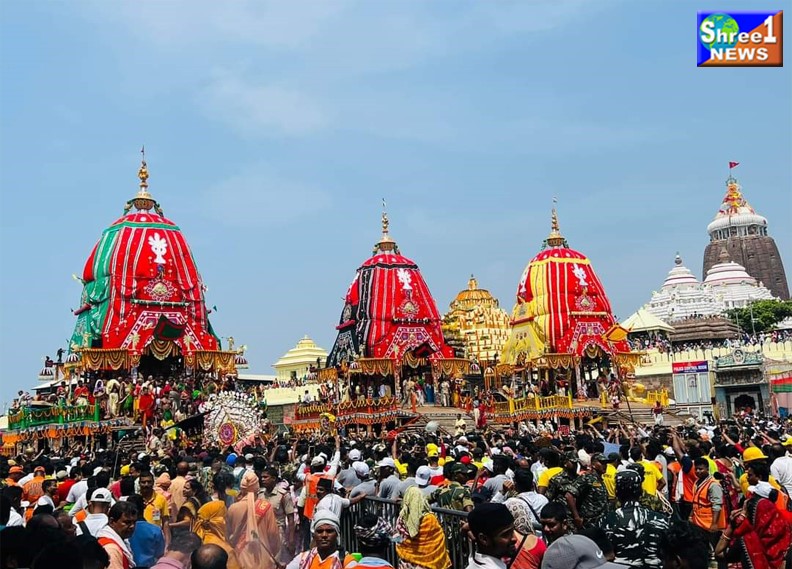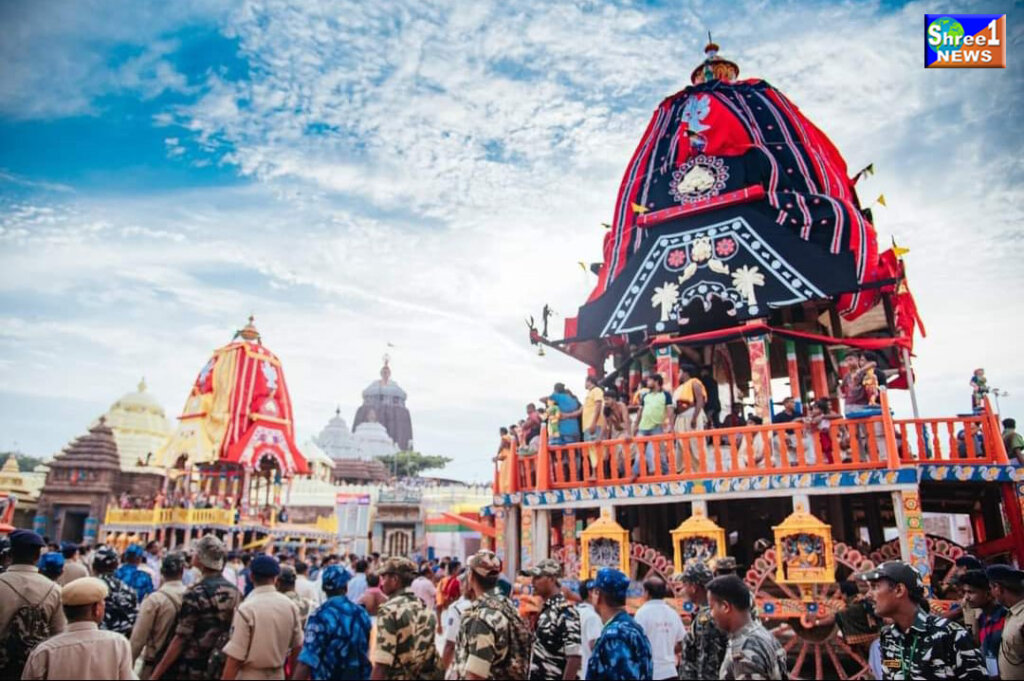The Jagannath Rath Yatra, also known as the Car Festival of Puri, is an annual event celebrated in the city of Puri in Odisha. It is one of the oldest and most important Hindu festivals and has been celebrated since ancient times. The festival marks the journey of Lord Jagannath from his temple to his chariot, which is pulled by devotees through the streets of Puri. The festival holds immense religious significance for Hindus all over India and is also a popular tourist attraction.
The Rath Yatra is a grand affair with various rituals being performed by devotees who come from far and wide to take part in this celebration. From chanting mantras to offering prayers, every aspect of this festival has its own importance and significance. Additionally, there are several interesting facts associated with this event that make it even more special.
This festival is celebrated with much fanfare and enthusiasm every year by millions of devotees all over India.
The rituals associated with this festival are very unique and significant. From the beginning of the yatra, when devotees prepare chariots for Lord Jagannath, to the end, when devotees return home after taking blessings from Lord Jagannath at Gundicha temple, every ritual has its own importance and significance.
The Ratha Yatra of Puri is considered the oldest and largest Hindu chariot festival celebrated annually in June or July, on the bright half of the lunar month of Ashadh. During the festival, Lord Jagannath along with His siblings Lord Balabhadra and Devi Subhadra are pulled in three massive, wooden chariots to Gundicha Temple whereby they reside there for a week and then return to the Jagannath temple.
The Chariots
Every year since its inception, a certain number of families of traditional carpenters have built the chariots, and the methods, measurements, and skills for doing so have been passed down through centuries. The manufacture of all chariots begins and ends at the same time.
The three chariots, which stand about 45 feet tall and have 18, 16, and 14 wheels, are manufactured with precision without the use of measuring tapes. All that is used is the age-old method of measuring with one’s hands and fingers. It’s worth noting that not a single metal nail is used in the construction of these gigantic chariots, instead opting for the old-school carpentry method of using wooden pegs and joints.
The wood that was used to build this came from two native forests, Dashpalla and Ranapur. Because the amount of wood needed for these chariots is substantial, double the number of saplings are planted at the same time.

Three chariots weighing 200 to 300 tons each are prepared for the 2.5-kilometer Rath Yatra to the Shree Gundicha temple. Lord Jagannath’s chariot, Nandigosh, weighs between 280 and 300 tons. Lord Balabhadra’s (Taladwaja) and Devi Subhadra’s (Darpadalan) chariots weigh 250 and 200 tonnes, respectively. Each of the three chariots stands around 45 feet tall and has 12 to 14 wheels. For 58 days, 250 employees were involved in the manufacture of these chariots. The three chariots were constructed using around 10,800 cubic feet of wood.
Three chariots stand on the Bada Danda, Grand Avenue, ornamented according to the distinctive pattern mandated and followed for generations. The chariots are lined up across the the wide avenue in front of the temple close to its eastern entrance, which is also known as the Singhadwara or the Lion’s Gate.
On the sides of the chariots are nine Parsva devatas, painted wooden figures representing various deities. Each chariot is propelled by a charioteer (Sarathi) and four horses.
Jagannath inspired the English word Juggernaut. It refers to a giant, heavy vehicle, particularly an articulated lorry, or to a massive, powerful, and overwhelming force. When British officials witnessed the enormous size of the chariots, they were astounded beyond belief and used this term to describe anything massive and a vehicle.

Naming: Nandighosa is the name of Lord Jagannatha’s chariot. It stands 45 feet tall and 45 feet square at the wheel level. It features sixteen wheels, each of seven-foot diameter, and is adorned with a red and yellow cloth cover. The Taladhwaja, Lord Balarama’s chariot, is the one with the Palm Tree on its flag. It has fourteen wheels, each of seven-foot diameter wheels coated in red and green linen. It stands 44 feet tall. Subhadra’s chariot, known as Dwarpadalana, literally “trampler of pride,” stands 43 feet tall and hastwelve wheels, each of seven-foot diameter. This chariot is draped in red and black material, with black usually connected with Shakti and the Mother Goddess.
Pahandi Bije

In this ritual, the massive idols of Lord Jagannath, Lord Balabhadra, and Devi Subhadra will be carried in a ceremonial procession from the temple and installed on the chariots by the attendants. The chariots will be used in a procession known as Pahandi Bije.

The massive, colorfully decorated chariots are drawn by a swarm of worshippers on the Bada Danda, the Grand Road leading to the Gundicha Temple, which is nearly two kilometers to the north. On the route, Lord Jagannath’s chariot, Nandighosa, stops near the crematorium of Bhakta Salabega, a Muslim devotee, to pay tribute.

By the evening, the chariots should have reached at the Shree Gundicha temple. The next day, all the deities will be taken inside the Gundicha temple where they will stay for 9 days till the return journey, known as Bahuda Yatra.
Chhera Pahanra
The second phase of the ritual is just as colorful and ornate. This rite, known as ‘Chhera Pahanra,’ is conducted by the king of Puri every year during the Rath Yatra. ‘Chhera’ is an Odia word that meaning to sprinkle holy water, whereas “Panhara” means to sweep the floor. The monarch brushes the Lords’ chariots with a golden broom after the Lords’ idols are put on the chariots. Then he worships the deities with an aarati, and the holy trip begins.

This ceremony is performed to demonstrate the head of state’s allegiance to the Lord. It is an ancient rite, yet the practice has evolved over time. Previously, the king would sweep the street before the chariots rolled out and preceded the chariots. With time the ritual has changed and now the king sweeps the chariots only.
Hera Panchami
Hera Panchami is a ritual held in the Puri Jagannath Temple during the Rath Yatra month. It is recognized as a Goddess Lakshmi ritual. The fifth day of Rath Yatra, i.e. the fifth day of Ashadha’s brilliant fortnight, is known as Hera Panchami. During Ratha Yatra, Lord Jagannath departs on a holy journey with his brother Lord Balabhadra and Devi Subhadra, as well as his divine weapon Sri Sudarshana, leaving His bride Mahalaxmi behind.
The Goddess shows her displeasure with the divinity. She rides in a palanquin in the form of Subarna Mahalaxmi to the Gundicha Temple, the Adapa Mandapa, and threatens Him to return to the temple as soon as possible.
To appease Goddess Mahalaxmi, Lord Jagannath offers her an agyan mala (a garland of consent). Mahalaxmi then returns to the main temple via the Nakachana gate. The Goddess instructs one of her servants to ruin a section of the Nandighosa chariot in a one-of-a-kind rite. She then hides behind a tamarind tree outside the Gundicha Temple. After some time, she sneaks back to Hera Gohri Lane, a distinct pathway known as Hera Gohri Lane. Thousands of Jagannath worshippers participate in this one-of-a-kind ritual.
Skanda Purana mentions Hera Panchami ceremonies as an important function of Shreemandir.
According to the Temple’s history, this “utsav” began under the reign of Maharaja Kapilendra Deb. Prior to his reign, the Hera Panchami event was observed symbolically by Mantra recitation. According to Madala Panji, Raja Kapilendra Deb replaced this practice by introducing a gold idol of Mahalaxmi and making the festival more realistic.
Bahuda Yatra

On their return from Gundicha Temple to Shreemandir, the Lords stop for a bit near the Mausi Maa Temple (Aunt’s residence) and have an offering of the Poda Pitha, a unique form of pancake that is supposed to be a favorite of the deities. The deities return to their abode after a seven-day stay.







 Finance
Finance







